The history of China is broken up into periods known as dynasties, which are imperial regimes named for the family the ruling emperor belonged to. From 2070 BC until 1912 CE, China was ruled by emperors.
Art, artifacts, conflicts, and events throughout Chinese history are all described and grouped according to the dynasty in which they occurred.
Today, China is politically divided into the People’s Republic of China, which is mainland China, and the Republic of China which refers to Taiwan. During dynastic rule, territories were broken up and often ruled over by different dynasties.
Table of Contents
How Many Dynasties Did China Have?
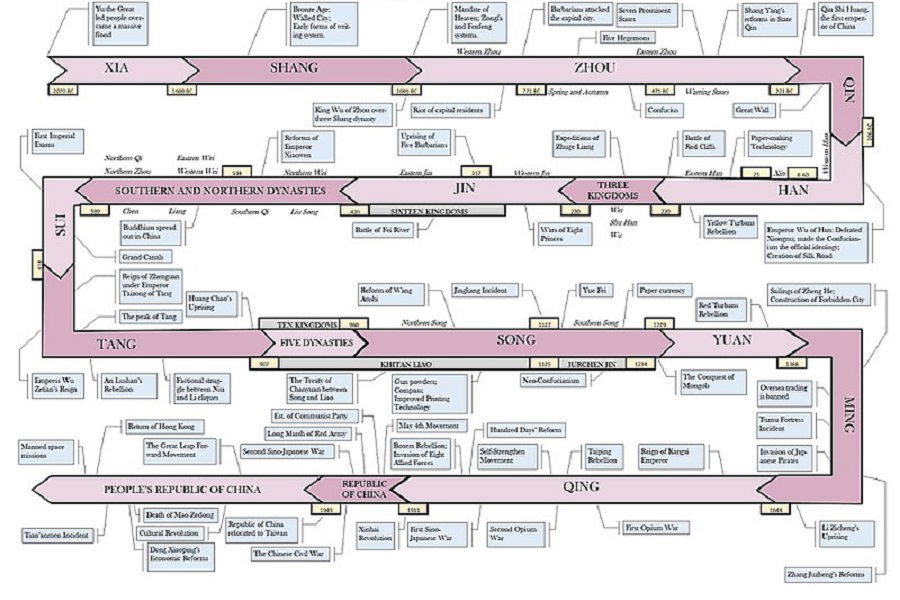
China had thirteen major dynasties, which were not limited to ruling families of Han ethnicity, China’s dominant ethnic group.
From the onset of dynastic rule in 2070 BC, the power of ruling families and dynasties rose and fell for nearly four millennia. Dynasties fell because the ruling family was overthrown or usurped. Often dynasties would continue although another had already begun, while other families fought for the chance to rule China.
China’s early emperors and rulers ruled by divine right referred to as the Mandate of Heaven. It was named such because it was believed the right to rule was given to the ruling family by the god of the Sky or Heaven.
What are the 13 Chinese Dynasties in Order?
The history of China is long and complex. Below are 13 of the major Chinese dynasties in order, detailing the most important aspects of each dynasty.
Xia Dynasty (c. 2070-1600 BC)
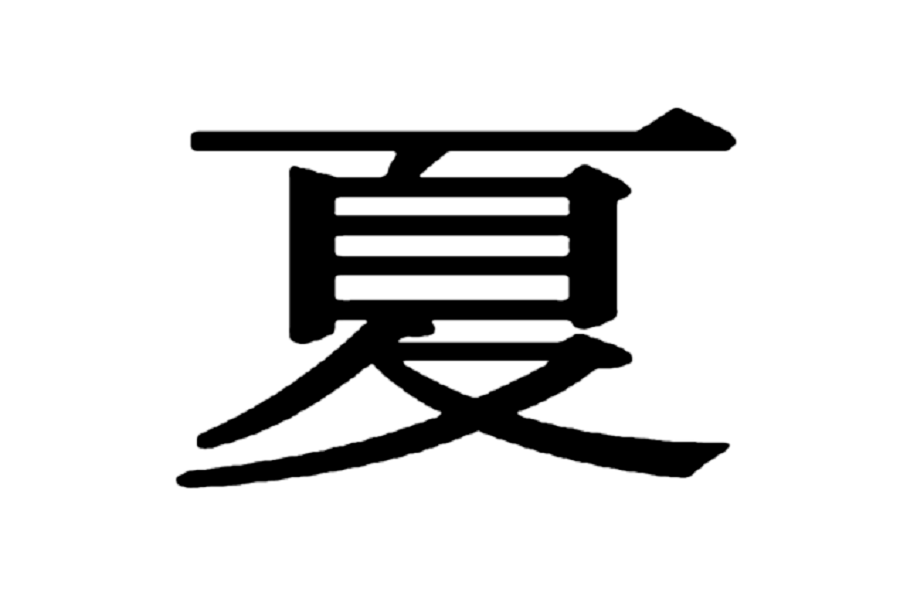
Dynastic rule began in China with the inauguration of Yoa the Great in 2070 BC. The dawn of dynastic rule meant that Yu the Great had absolute power, as did every emperor who succeeded him. The rule of China was passed down through the male line of the ruling family.
For a long time, this very first dynasty was considered to be nothing more than a myth made up by Chinese scholars. For many, the idea that the Xia dynasty was the first is still regarded as a myth. As it happened, archeological evidence supporting this claim was discovered in the mid-1960s.
Much of what we know about the Xia dynasty is based on legends and myths passed down through the centuries. The story is that the Xia tribe defeated their enemies, and came to power after the death of the Yellow Emperor, Huang-Ti. The tribe picked Yao to lead them.

Yu The Great
When Yao relinquished his role of emperor and the mantle passed to Yu Shun, who would go on to be known as Yu the great. During his time as emperor, Yao struggled with the flooding along the Yellow River. Many lost their homes and died when the Yellow River flooded.
Yoa appointed a man by the name of Gun to stop the flooding. Gun failed, and he either committed suicide or exiled himself. Either way, Yu, Gun’s son was determined to fix the failures of his father. Yu dedicated thirteen years of his rule to ensuring the Yellow River would no longer wreak havoc on his people.
Yu built a series of canals to contain the waters. Shun then made Yu the leader of his armies. After successfully defeating the enemies of the Xia tribe, Yu was named as Shun’s successor and became Yu the Great.
Yu established a stable central government and divided and organized China into nine provinces. When Yu died, he named his son Qi as his successor which began the tradition of dynastic succession.
The End of The Xei Dynasty
The Xei dynasty ended when the tyrant emperor Jie, was overthrown by Tang, who was a member of the Shang family. Tang believed that Jei had lost the right to rule the land and led a revolt against him.
Jei was defeated during the battle of Mingtio, where he fled from the battlefield. He died of an illness shortly later. Tang became emperor, thus ushering in the period of the Shang dynasty.
Shang Dynasty (c.1600-1050 BC)
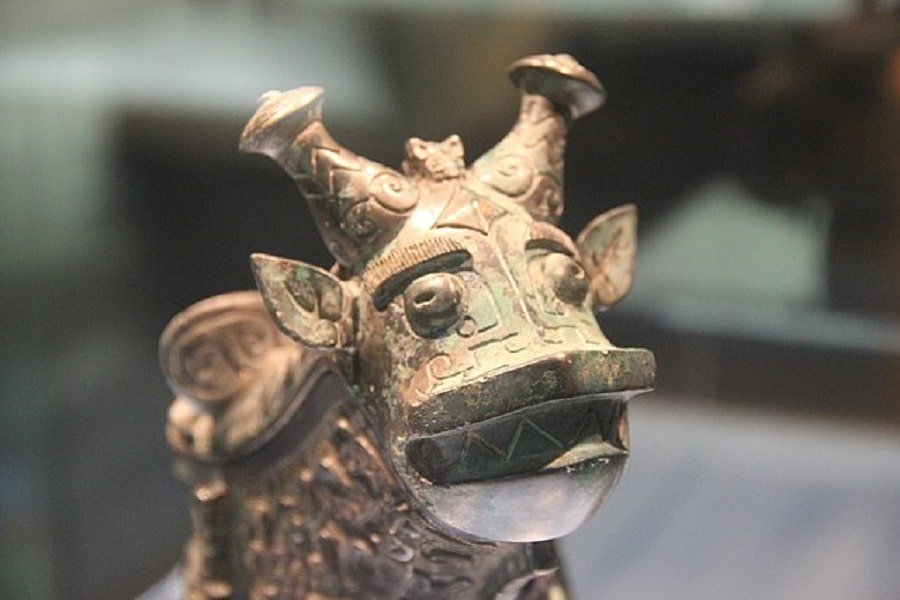
In roughly 1600 BC the Shang dynasty began in China and is the first dynasty to be recorded in Chinese history for which there is concrete historical evidence.
The Shang dynasty ushered in the Chinese Bronze Age, during which the foundations of Chinese culture developed. It was a period of cultural, technological, and social development in the country.
The dynasty’s first ruler, Tang, was the one who introduced the idea of drafting soldiers into the army. Tang also developed a way to help the country’s poor. The territory ruled over by the Shang dynasty was a collection of city-states.
The capital of the Shang dynasty was originally the city of Anyang in today’s Henan Province situated in the Yellow River Valley of Central China. It was from here that the Shang leaders ruled for two centuries.
What Is the Shang Dynasty Known For?
The Shang dynasty is known for its advances in military technology, astronomy, and mathematics. When Tang became king, he created a strong centralized government that served the people.
READ MORE: Who Invented Math? The History of Mathematics
During the Shang dynasty, the lunar-based calendar was converted to a solar-system-based system. Developed by Wan- Niem, it was the first calendar that followed a 365-day cycle.
The first use of Chinese characters was during the Shang dynasty, with inscriptions discovered on tortoise shells and oracle bones. Much of what we know about the Shang dynasty is what has been deciphered off oracle bones.
The Shang are credited with the development of Taoism. Which is a religion that emphasizes living in harmony with nature and the Tao, or the source of everything.
The Shang dynasty was a period of advancements in military technology and weapons, as the Shang armies used horse-drawn chariots by 1200 BC.
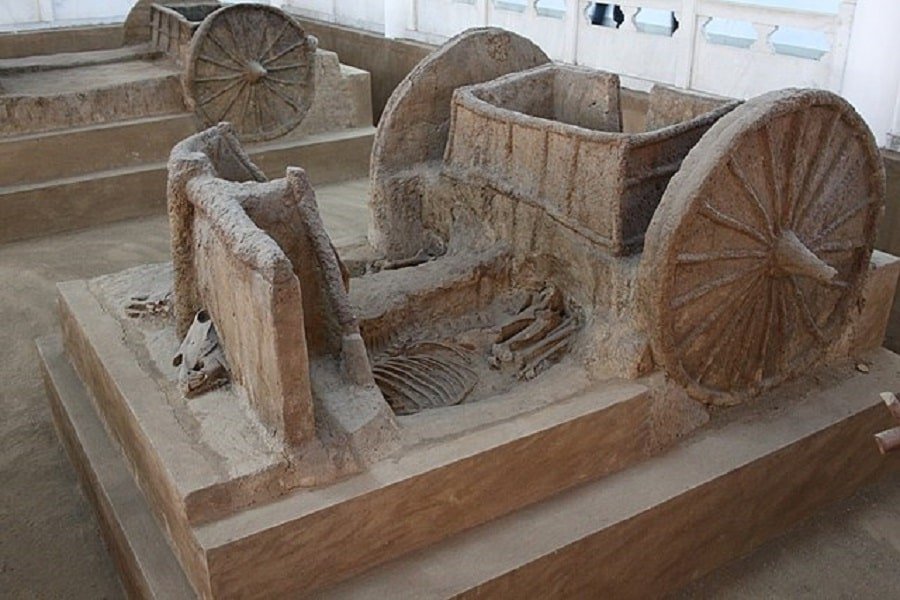
READ MORE: The Ancient Weapons of Old Civilizations
The Fall of The Shang Dynasty
The Shang dynasty fell after 600 years when the Shang family lost the Mandate to Heaven. The last ruler of the Shang dynasty, Di Xing, was not liked by his people. King Di Xing preferred to torture people rather than help them.
As a response to the cruelty of the last Shang king, King Wu of the Zhou family attacked Di Xing at Anyang. Di Xing had ordered 20,000 slaves to fight alongside the army, but when the Zhou army approached the capital city, the Shang army refused to fight them.
Instead, Shang forces joined the invading Zhou army in what would become known as the battle of Muye. Di Xing committed suicide by setting fire to his palace. The Shang were overthrown by King Wu of the Zhou family in 1046 BC.
Zhou Dynasty (c. 1046-256 BC)
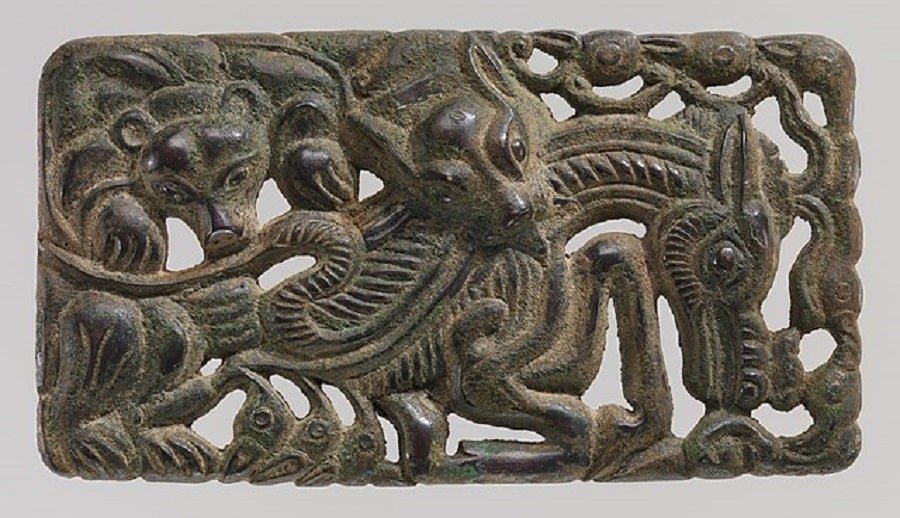
The Zhou dynasty ruled China longer than any other dynasty. It is widely regarded as one of the most influential periods in Chinese history. They ruled from when King Wu overthrew the Shang dynasty in 1046, for nearly 800 years. The dynasty can be divided into two periods, the Western Zhou (1046 – 771 BC) and Eastern Zhou ( 771 – 256 BC).
The period of Zhou dynastic rule was marked by a decentralization of power, with regional lords and rulers exerting greater influence and autonomy. In addition, the Zhou dynasty was also a time of philosophical, cultural, and intellectual development. Developments during this period laid the foundation of Chinese culture.
Many of China’s greatest philosophers, artists, and writers existed during this period, including Confusious and Lazoi. The Chinese also continued to make advances in agriculture, irrigation, military technology, and other key technologies.
One of the defining characteristics of the Zhou dynasty was its emphasis on the ‘Mandate of Heaven’ concept. Although the concept was not invented by the Zhou dynasty, it was strengthened and woven deeper into both the political and cultural life of the people.
Western Zhou
King Wu died shortly after becoming king. He was succeeded by his brother, the Duke of Zhou. The new king expanded the Zhou territory, and although he ruled respectfully, mindful of the Mandate of Heaven, rebellions broke out across the vast territory.
The territory was too large to maintain under one centralized government, so instead, the Duke of Zhou restricted the government. Under Zhou, the system of governance adopted a feudalist approach. As a result, the territories became vassal states.
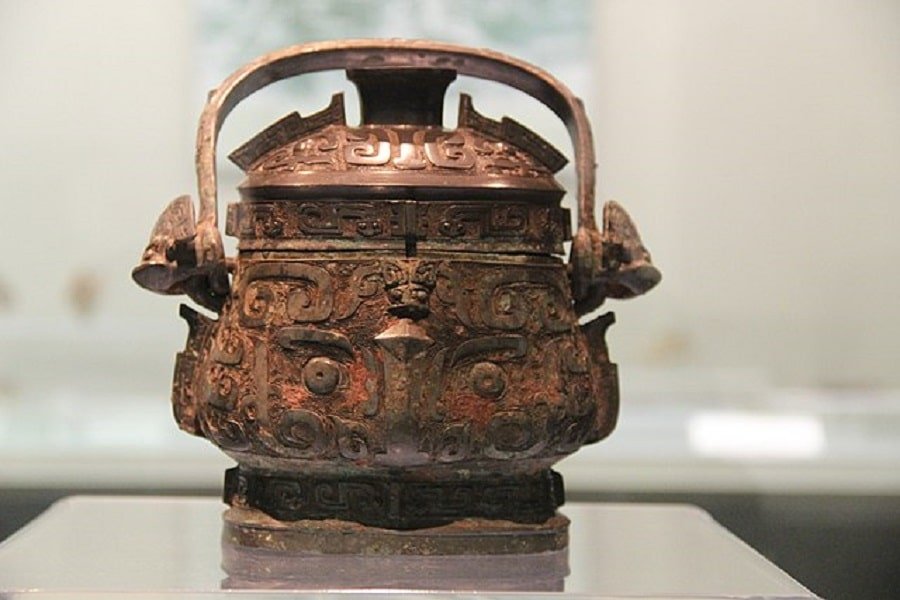
The Eastern Zhou Period
As with any territory that follows a feudalist structure, the danger of one of the vassal states rising to overthrow the king was released. Western Zhou fell in 771 BC. The capital was then moved to the East, beginning the Eastern Zhou Period.
Unlike the previous period, Eastern Zhou was a time of war and violence. The beginning of this period was marked by the Spring and Autumn period when the territories all wanted to prove they could topple the Zhou dynasty.
The Spring and Autumn Period
The Spring and Autumn period was when the Qin, Chu, Han, Qi, Wei, Yan, and Zhou fought each other so much that it became the new way of life during this period. Each state still believed that the Zhou family maintained the Mandate of Heaven, but they fought to prove they were worthy successors.
Although violent, the Spring and Autumn period was a time of great cultural and philosophical development and was the time of the Hundred Schools of Thought.
The violence of the Spring and Autumn period set the scene for the next period of Zhou dynastic rule, known as the Warring States Period. It was during this period that the famous book, Art of War was written by Sun-Tzu. Each state desperately tried to get the upper hand on the other on the battlefield.
Fall Of the Zhou Dynasty
The downfall of the Zhou dynasty was in part thanks to Sun-Tzu’s The Art of War. During the Spring and Autumn period, states struggled to get the upper hand because they followed the old rules of war, such as chivalry on the battlefield. Each used the same tactics and so the wars fought were futile. Until a Qin leader decided it was time to deviate from the old ways.
King Ying Zhen followed the advice and embarked on a ruthless campaign against the other states. The result was the fall of the Zhou dynasty and the rise of the Quin.
Qin Dynasty (221-206 BC)
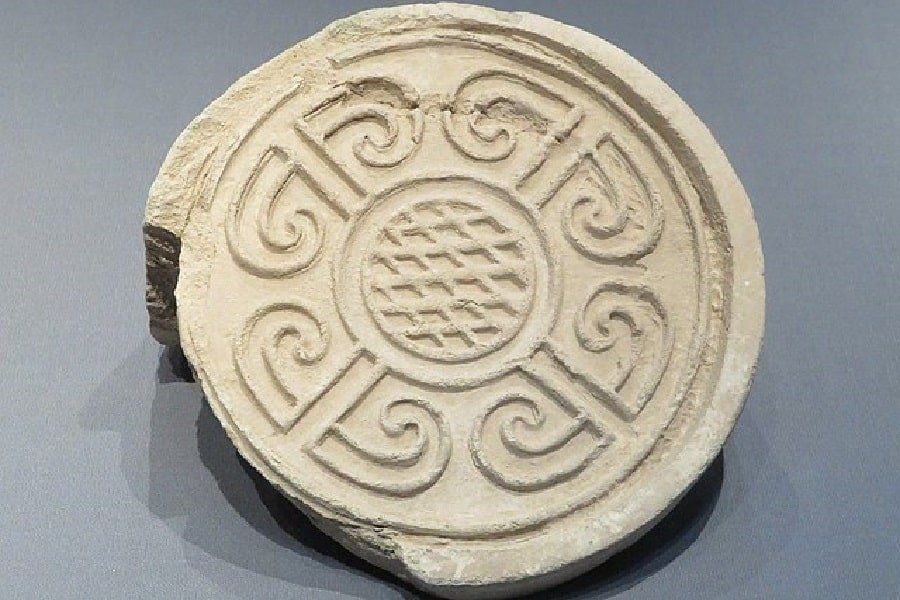
The Qin dynasty was the first imperial Chinese dynasty, it was also the shortest dynasty. Despite its relatively short rule, the Qin dynasty was an important and transformative period in Chinese history that had a lasting effect on Chinese civilization.
READ MORE: Ancient Civilizations Timeline: 16 Oldest Known Cultures From Around The World
Qin, pronounced ‘Chin’ is the dynasty from which the vast territories’ name would be derived. The Qin dynasty became the first to rule over a unified China.
The Qin dynasty was founded by the first emperor, Qin Shi Huang who conquered and unified the various warring states. The capital of the Qin dynasty was Xianyang, in what is today the Shaanxi province.
Under the Qin dynasty, a centralized system of government was developed and presided over by the Emperor. The Qin dynasty, like its predecessors, kept and expounded upon many of the Zhou dynasties’ achievements and advancements.
The Achievements of the Qin Dynasty
The Qin introduced a uniform method of writing, a standardized system of weights and measures, and a network of roads and canals that helped to connect the territories and facilitate trade and communication.
One of the most famous and enduring legacies of the Qin dynasty is the Terracotta Army. In 1974 farmers in Lintong County in the Shaanxi province, uncovered one of the most impressive finds of the century.
They uncovered 8,000 life-size terracotta sculptures of soldiers and horses buried near the tomb of the first emperor, put there to protect him in the afterlife. The Terracotta Army was not the only enduring legacy from the Qin dynasty, as it was the period when the construction of the Great Wall of China began.
Qin Shi Huang used conscripted labor for the construction of the Great Wall of China, during which thousands died.
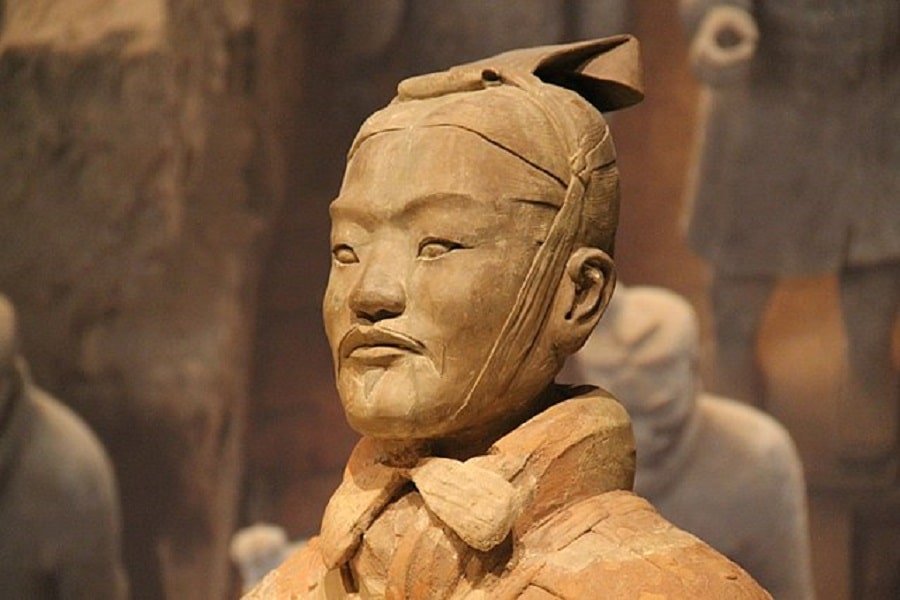
What Happened to the Qin Dynasty?
Despite its many achievements, the Qin dynasty also faced several problems and challenges. The first emperor was an authoritarian ruler, who enforced a strict legal code and harsh enforcement and punishment for those who broke the code.
After the death of the First Emperor, the younger of Qin Shi Huang’s sons took the throne. The empire was soon in turmoil and revolted against him. A warlord killed the new emperor, and the united territory was divided once again.
After the division of territory, Lui Ban, who was given the Han River Valley, rebelled. After a three-year campaign, he overthrew the Warlord King Xiang Yu ushering in the Han dynasty in 206 BC.
Han Dynasty (206 BCE-220 AD)
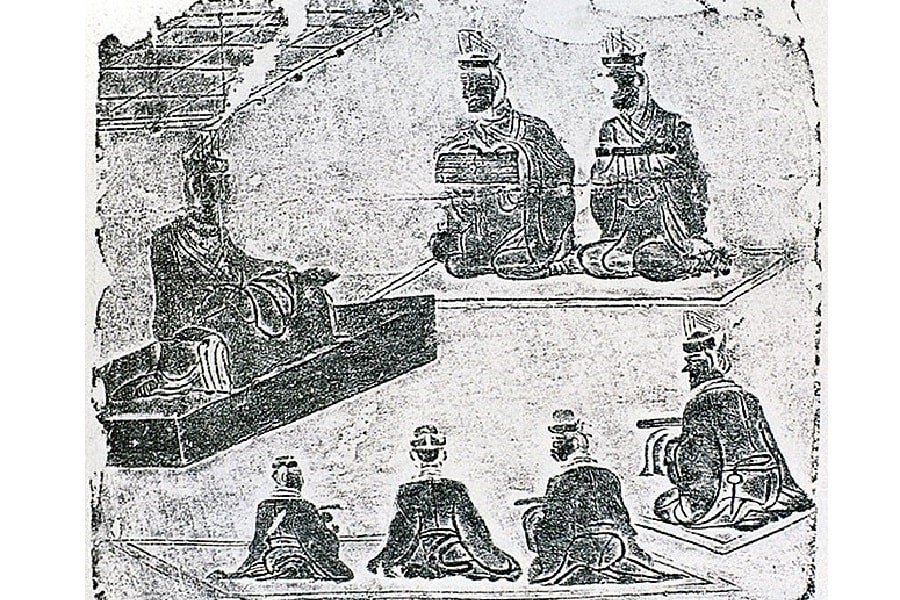
The Han dynasty was a powerful imperial dynasty, ushered in by Lui Bang, who would become Emperor Goazo. This dynasty is widely considered to be one of the greatest dynasties in Chinese history and ruled most of a unified China proper.
During the Han dynasty, China underwent significant cultural, scientific, and economic growth and transformation. Many of the inventions and cultural developments of the Han dynasty still impact China today.
One of the Han dynasty’s key leaders was the seventh emperor of the dynasty, Emperor Wu. He ruled from 141 to 87 BC. During his 54-year reign, Wu spearheaded the greatest territorial expansion of the Han dynasty. Wu expanded Chinese cultural influence as far as modern-day North Korea.
The capital city of the Han dynasty was established at Chang’an situated on the Wei River. Chang’an would not be the last capital of the dynasty. The main ideology of the time was Confusionasim.
The Silk Road
Perhaps one of the Han dynasty’s most important achievements and contributions was the opening of the silk road. In 138 BC Emperor Wu sent a man by the name of Zang Qian on a mission to engage with the tribes to the west of the territory.
Zang Qian reached a Greek-controlled area of Afghanistan called Bactria, where he saw Chinese textiles which had come from an area called Shendu. When he eventually arrived back in China after a 13-year absence he informed Emperor Wu of his findings in the west.
Zang Qian mapped out a route that could lead traders from China to Afghanistan. This route that opened up the west to trade became known as the Silk Road. The trade routes were used from 130 BC until 1453 CE and introduced Buddhism to China.
READ MORE: The 19 Most Important Buddhist Gods
Why Did the Han Dynasty Fall?
Despite its achievements, the Han dynasty was plagued with an unstable royal court, and it was often the scene for family politics and dramatics. It was during the later Han period that these family dramatics turned deadly.
The later Han dynasty, known as Eastern Han, was marked by political and social unrest. In 189 CE, a war broke out in the ruling family that lasted until 220 CE and resulted in the downfall of the Han Dynasty.
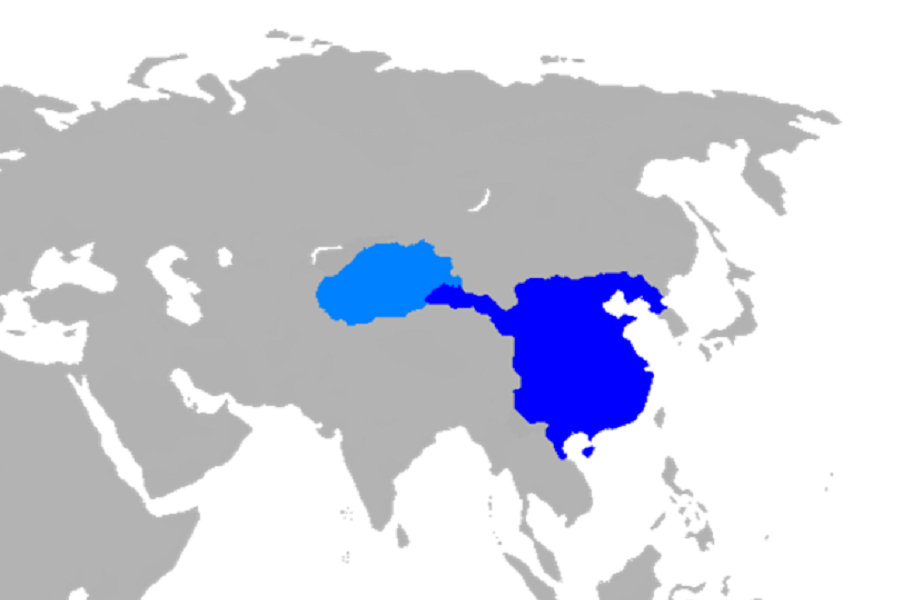
Six Dynasty Period (222 – 581 CE)
The Six Dynasties period was a tumultuous time in Chinese history that is characterized by political fragmentation rather than centralization of previous dynasties. As its name would suggest, the Six Dynasty period saw the rise and fall of six unrelated dynasties in the South of China.
These dynasties were:
- The Eastern Wu Dynasty (222-280)
- The Eastern Jin Dynasty (317 – 420)
- The Liu Song Dynasty (420 – 479)
- The Southern Qi Dynasty (479 – 502)
- Liang Dynasty (502 – 557)
- Chen Dynasty (557 – 589)
The capital for each dynasty was Jiankang, which is modern-day Nanjing. For the first time in Chinese history, the center of power was held in the South of the territory and not the north. During this period, China was plagued with internal conflicts, wars, and invasions.
What Happened During the Six Dynasty Period?
Although the Six dynasties period was a time of great political upheaval and conflict, it was also a time when poetry and art flourished. During this volatile period, some of the greatest poets and writers in Chinese history lived and worked, including Tao Yuanming, whose works are admired and read today.
Confucianism, which had been the predominant ideology during the Han dynasty, declined during the Six Dynasties period. In its place, Buddhism and Toasim became the more popular choice, both of which played a major role in shaping Chinese culture.
Politically, this period saw the emergence of a new form of government known as the tributary system. Under this system, the central government maintained control over its territories through military power, economic incentives, and diplomacy.
Despite the cultural achievements of the period, it was a highly unstable time in Chinese history, with numerous kingdoms vying for power and control. This instability was further impacted when invading tribes from the North arrived in South China, launching repeated attacks.
Eventually, the nomadic Northern tribes of ancient China were defeated and assimilated into ancient Chinese society.
Sui Dynasty (581-618 CE)
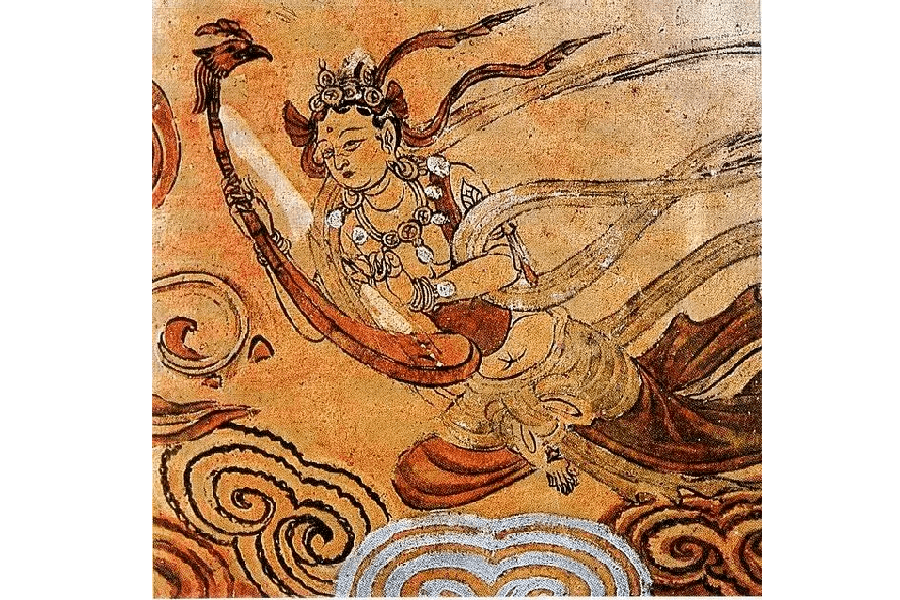
This short-lived dynasty came into power and successfully ended the turbulent Six Dynasty’s period. The Sui dynasty was founded by Yang Jian, a powerful general who reunited a fragmented China after more than three hundred years of division and conflict.
For several centuries, China had been divided into Northern and Southern dynasties. The Sui dynasty changed this and reunified the Chinese empire. Yang Jian was able to subdue the rival kingdoms and unite them under a centralized government once more. The capital of the Sui dynasty was Daxingin in north-central China.
What is the Sui Dynasty Known For?
Yang Jian introduced uniform government institutions across the empire and conducted a census. Additionally, Yang Jian reinstituted Confucian rituals back into the government. The emperor introduced a new legal code that was fairer and slightly more lenient.
The second emperor of the dynasty built the Grand Canal, which linked the Yangtze and Yellow Rivers. The Sui were known for their complex construction projects, including the building and maintenance of three capital cities.
The Sui introduced land reforms, which in theory gave more land to the poorer farmers, but in practice led to corruption at the hands of wealthy landowners.
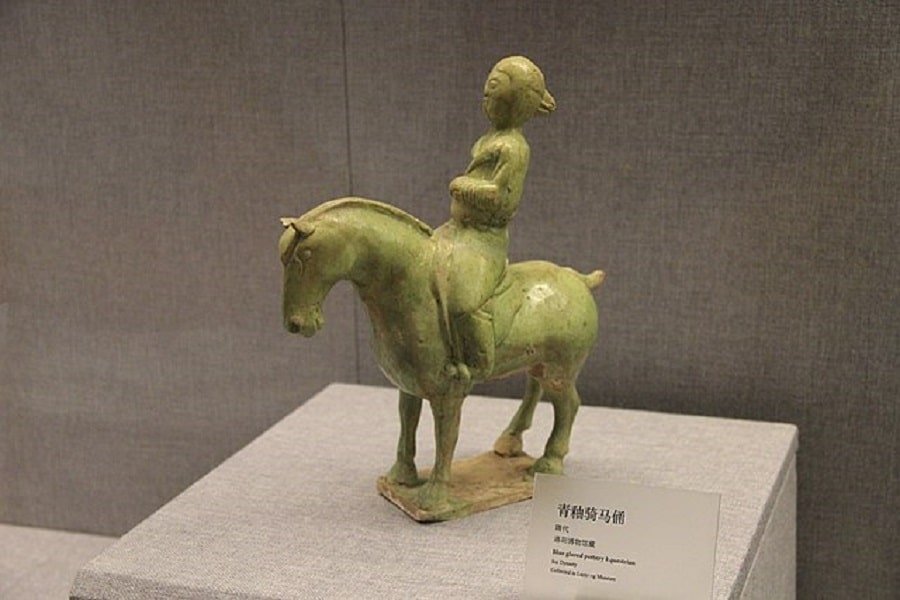
Why Did the Sui Dynasty Fall?
The Sui dynasty fell when the poorest members of Chinese society rose in open rebellion in 613 CE. The rebellion, coupled with failed military campaigns against the Eastern Turks, and the overspending that characterized the Sui government, led to its collapse.
As a result of the assassination of the second emperor by one of his generals, the Tang dynasty was born.
Tang Dynasty (618 – 907 CE)
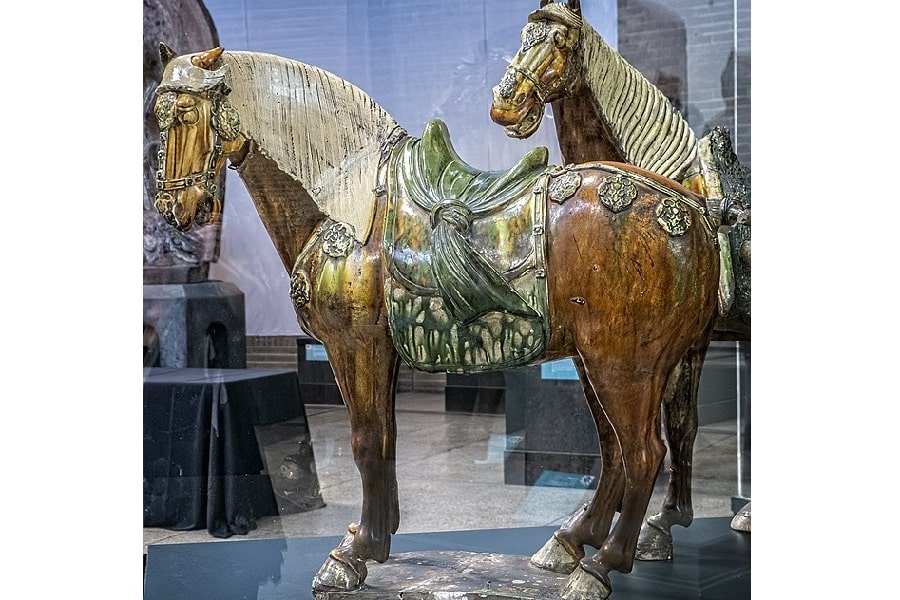
Often referred to as the golden age of imperial China, the Tang dynasty is one of the most influential and powerful dynasties in Chinese history. It was founded by Li Yuan, who had assassinated the Sui emperor.
During its nearly 300-year reign, the Tang dynasty was characterized by economic prosperity, territorial expansion, political stability, and cultural achievements. The culture of Tang China spread throughout most of Asia.
The dynasty’s second ruler, Emperor Taizong, seized a portion of the Mongol empire, further expanding Tang China’s cultural reach and territory.
Tang’s first emperor established an academy for poets during the dynasty’s golden age for the arts. The Tang dynasty saw China’s only formally recognized empress, Wu who briefly ushered in a Zhou Dynasty.
The Decline of the Tang Dynasty
The Tang dynasty began to decline around 820 CE. During the latter half of the dynasty, several Tang emperors were assassinated, rattling the stability that had characterized much of the dynasty.
The power of the central government began to wane. The countryside was overrun with gangs and armies who attacked towns and villages. When a rebel leader stormed the capital and took control, the golden age of poetry was over. Thousands of poets were executed.
In 907, the Tang dynasty fell when Zhu Wen declared himself the next emperor. Zhu Wen adopted his temple name and went by Emperor Taizu. When Taizu took the throne, another turbulent period of Chinese history began.
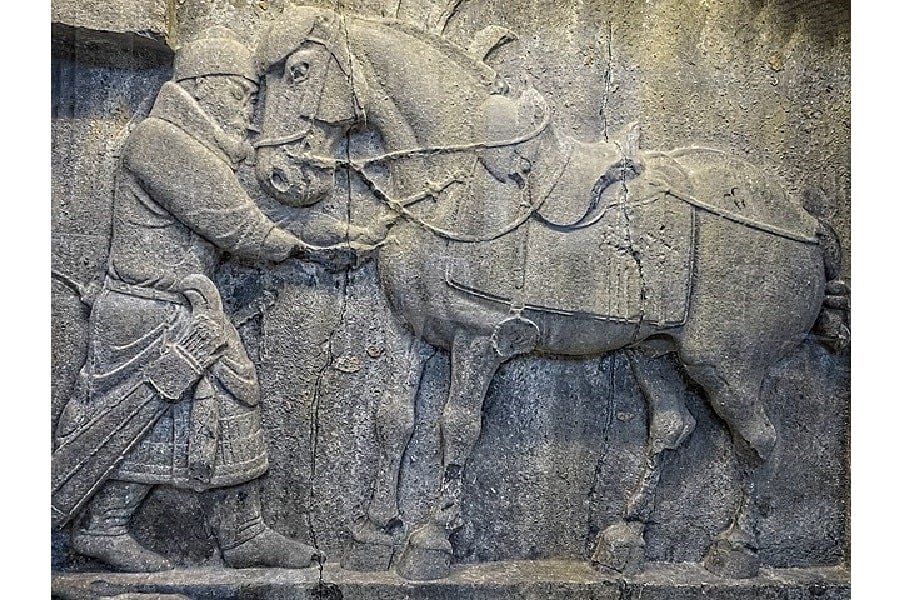
Five Dynasties and Ten Kingdoms Period (907-960 CE)
The Five Dynasties and Ten Kingdoms period of Chinese history was a time of disunity and fragmentation. Like the Six Dynasties period, it was characterized by a series of short-lived dynasties that succeeded one another, with little stability or continuity.
As its name would suggest, during this period five separate dynasties emerged, each ruling different territories in northern China. Simultaneously, ten independent kingdoms emerged in the southern and western regions.
Apart from political instability, the period is known for the development of white ceramics, tea culture (which had emerged during the Tang dynasty), painting and calligraphy, and the expansion of Buddhism.
READ MORE: 15 Chinese Gods from Ancient Chinese Religion
The Five Dynasties
The Five Dynasties of the north were Later Liang (907 – 923), the Later Tang (923 -937), Later Jin (936 – 943), Later Han (947 – 951), and Later Zhou (951 – 960).
Zhu Wen’s assassination of the Tang emperor began the Later Liang dynasty. Zhu Wen was assassinated by his son, who in turn was usurped by one of his generals Zhuangzong, beginning the Later Tang dynasty.
After ruling for thirteen years, Zhuangzong was deposed by one of his generals, Gazou who with the help of the Kithan (Mongol), began the Later Jin dynasty. The Kithan ended the Later Jin period when they invaded and took Gazou’s son captive.
A year after the fall of the Later Jin dynasty, the Later Han began when a former general of the Jin dynasty managed to push the Kithan out of the territory. The Later Han dynasty lasted four years before the Later Zhou began after another general ousted the emperor. This final dynasty ended when the emperor died, beginning the Song dynasty.
The Ten Kingdoms
The Ten Kingdoms were a group of states that developed at the same time in the economically wealthy southern territory of China. Each state had its government, with some rulers claiming the title of emperor.
The Ten Kingdoms were known for their remarkable cultural and artistic traditions. The period was also marked by economic growth and prosperity. The kingdoms in the south were no less volatile than the neighboring northern territories. Power struggles existed there too.
The period came to an end when the Song dynasty ushered in a new period of reunification.
Song Dynasty (960- 1279 CE)

The Song dynasty was founded by Emperor Taziu, who established a strong and centralized government after the fragmentation of the Five dynasties period. The imperial dynasty is split into two periods; the Northern Song (960 – 1125 CE), and the Southern Song (1125 – 1279 CE).
READ MORE: Fraternity and Fratricide in Late Imperial China
The new emperor had learned from the turmoil of the previous dynasty, implementing a system of rotation for the army to ensure he could not be overthrown. Tazui managed to unite most of China once again.
The Song dynasty was often invaded by the Kithan throughout its reign. The Kithan controlled the area surrounding the Great Wall of China. During the Northern Song period, the capital was at Bianjing (Kaifeng) and controlled most of eastern China.
The Southern Song period refers to the period when the Song were pushed out of their lands in the north by the invading Jin dynasty. The capital for this period was Lin’an (Hangzhou). In 1245, the territory that had been claimed by the Jin dynasty fell to the Mongol Empire.
In 1271 Kublai Khan, emperor of the Mongol Empire defeated the Southern Song after several years of warfare. The Song dynasty was over and the Yuan dynasty had begun.
Accomplishments of the Song Dynasty
The Song dynasty was a period of advancements in mathematics, science, technology, engineering, and philosophy. It was during the Song dynasty that paper money was used for the first time in the world.
Additionally, it was during this period that gunpowder weapons were invented. Economically, the Song dynasty rivaled that of Europe, and as a result, its population increased dramatically.
Yuan Dynasty (1260-1279 CE)

The Yuan dynasty was a Mongol dynasty founded by Kublai Khan who was the grandson of Ghengis Khan. Kublai Khan controlled most of China, and he was the first person of non-Han descent to control China properly. Eventually, the Mongol dynasty unified China, but at a great cost to the Chinese people.
The Yuan dynasty was a time of prosperity and peace, with China available to trade with the rest of the world. The capital of this prosperous Mongol dynasty was Daidu, present-day Beijing. During this period, the Mongol culture and traditions were forced upon the conquered Chinese. Furthermore, people of Mongol ethnicity were placed above all others.
Much of what we know about this period of Chinese history is from the writings of Marco Polo, who was an ambassador of such to Kublai Khan.
The Yuan dynasty declined steadily over time, being affected by famine, flooding, plagues, power struggles, and rebellions. Eventually, the Yuan dynasty was overthrown by a rebellion led by Zhu Yuanzhang who founded the Ming dynasty.
Ming Dynasty (1368-1644 CE)
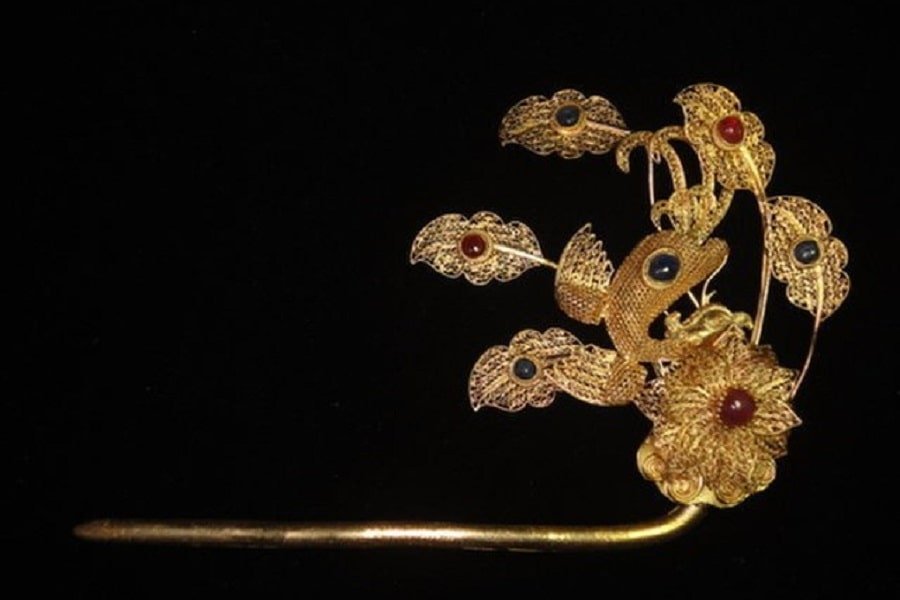
Zhu Yuanzhang, who would become Emperor Taizu founded the Ming dynasty after overthrowing the Mongol dynasty. Economically, the Ming dynasty flourished, as trade was opened up fully with the rest of the world. China began to trade silk and Ming porcelain with Europe.
The first Ming emperor, Tazui, was a suspicious ruler who had 100,000 people executed during his rule.
Culturally, the Ming dynasty was a time of great artistic and literary achievement. Books became more affordable and available to the masses. The Ming dynasty was a time of change and modernization for China. As China opened up to the world through maritime trade, the first group of European missionaries arrived in the country.
Why Did the Ming Dynasty End?
The collapse of the dynasty began with financial troubles caused by the over-extension of funds to government officials. Additionally, military campaigns against Korea and Japan drained the financial resources of the empire.
Financial issues were further impacted when the temperatures across the empire dropped significantly during the Little Ice Age that began in 1300. The effect of the drop in temperature was a mass crop failure, which led to famine.
The Ming dynasty was finally defeated in 1644 by the Manchunian people who invaded Ming territory from northeastern Asia.
Qing Dynasty (1644-1912 CE)
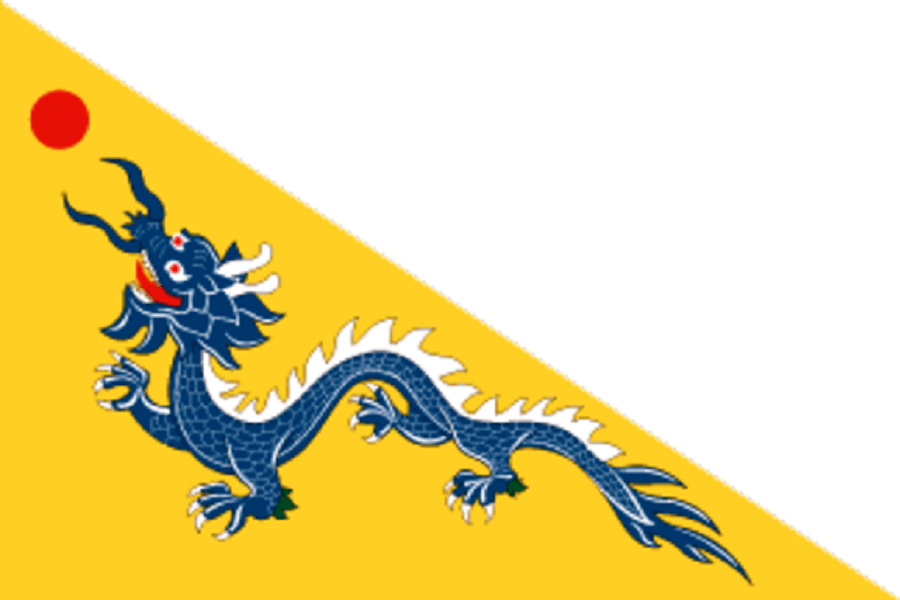
The Qing dynasty was the last imperial dynasty of China founded by Emperor Shunzhi. Initially, the dynasty was prosperous but later it was characterized by conflict. Under Manchunian rule the ethnic Han people faced discrimination, with men having to wear their hair in the Mongolian fashion, failing to do so would result in their execution.
Any act of defiance against the Mongolian ruler resulted in swift and brutal punishment. The Han people were moved out of the capital of Beijing.
The Qing dynasty had the longest-ruling emperor, Kangxi who ruled for 61 years. Emperor Kangxi repelled several attacks on China from Russia and put down several internal rebellions. His reign was characterized by an increase in exports and a decrease in government corruption.
The Opium Wars
The Opium Wars were two armed conflicts that broke out between China and Europe. The first Opium War began in 1839 and lasted for two years. The conflict was between China and the United Kingdom over China’s prohibition of trading in Opium, which is a highly addictive substance made from poppies.
Opium was being smuggled into China by the British, the smoking of which for recreational purposes had been outlawed by the Emperor. Britain ultimately won the Opium War due to technologically advanced weapons and ships.
The second Opium War was between China and France from 1856 to 1860. Again, China lost the war against the Western power.
The End of Dynastic Rule
The latter half of the Qing dynasty was characterized by conflict. Several vicious rebellions broke out in the 19th century. The dynasty eventually ended in 1911 when the National Party rebelled against the empire. This rebellion is known as the Xinhai revolution.
Asin-Gloro Puyi was the 11th monarch of the Qing dynasty and the last emperor of China. Puyi abdicated and soon after the Republic of China was created.